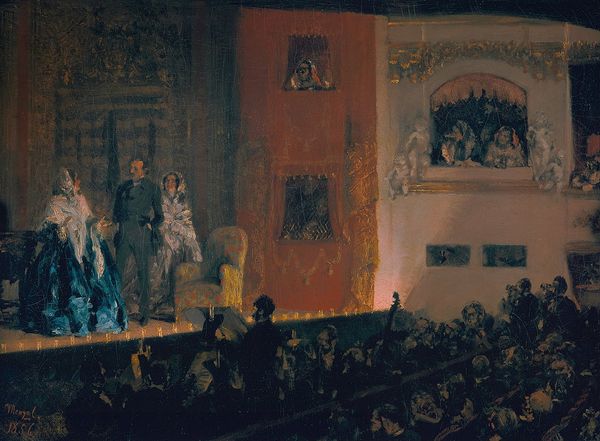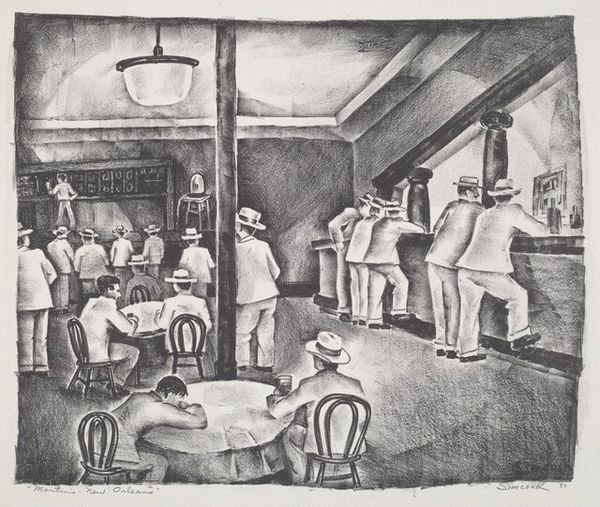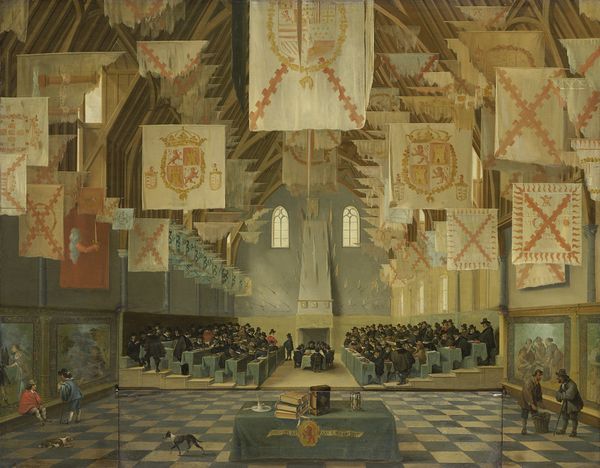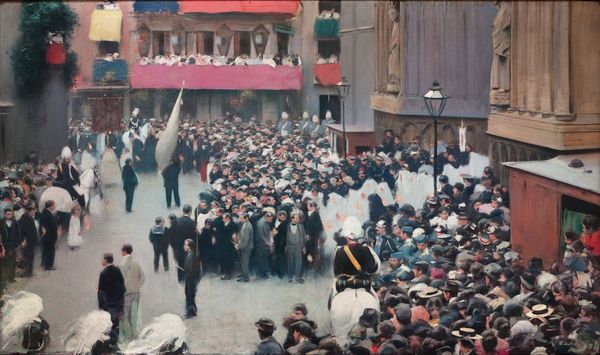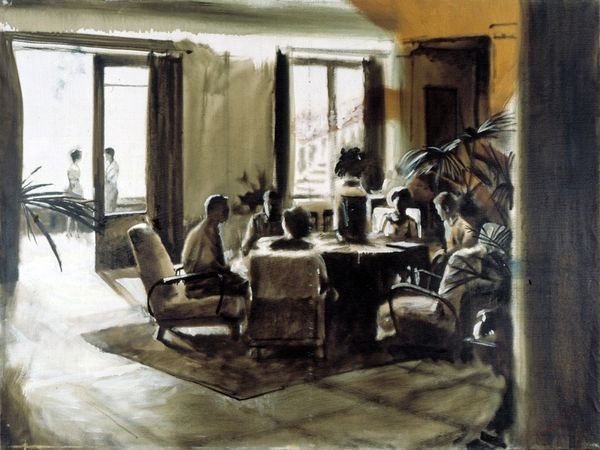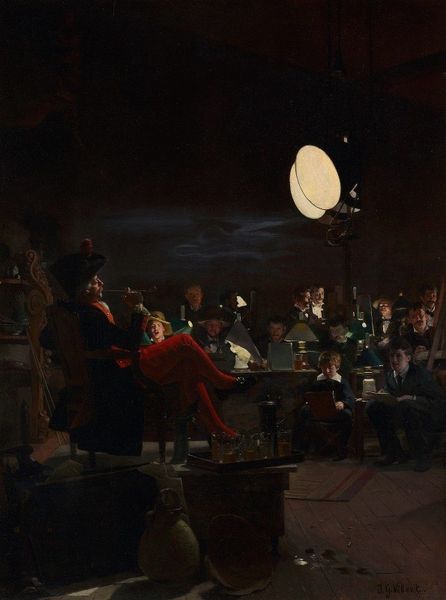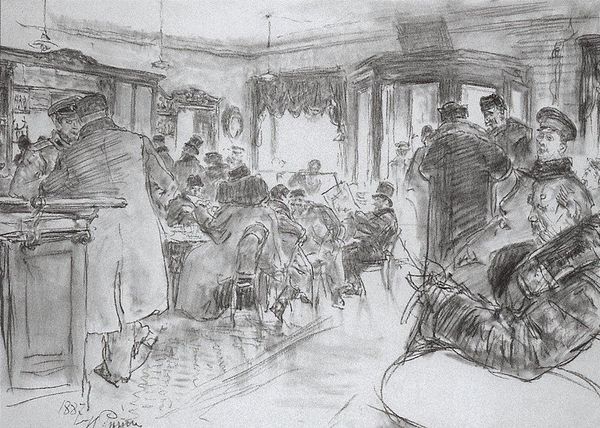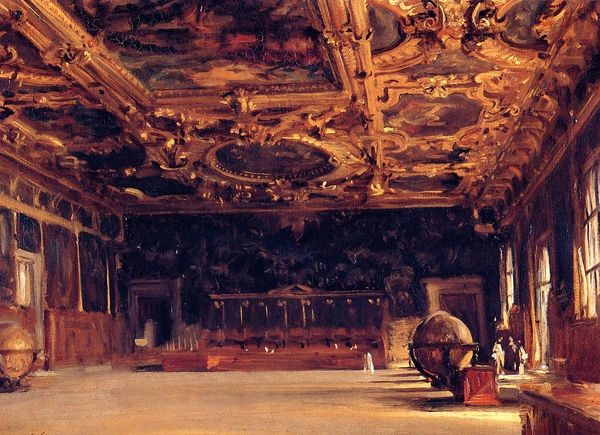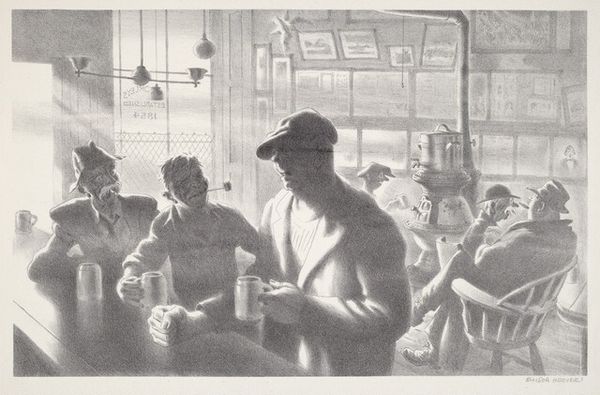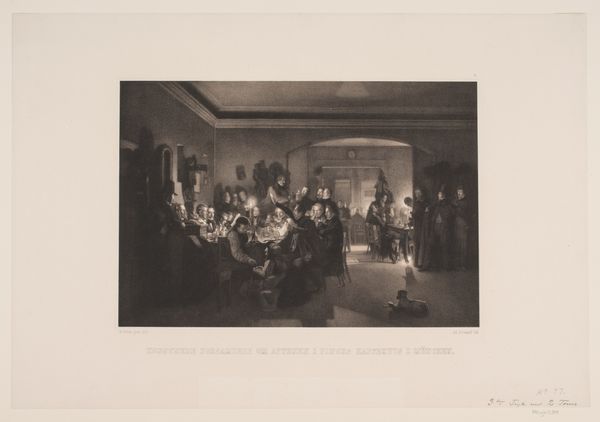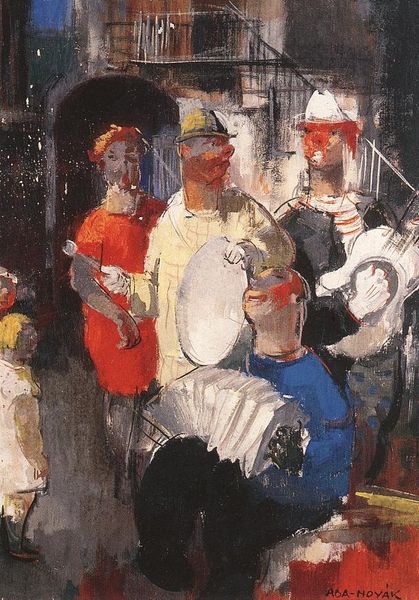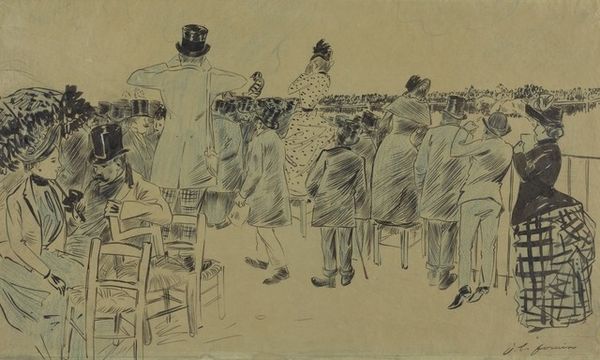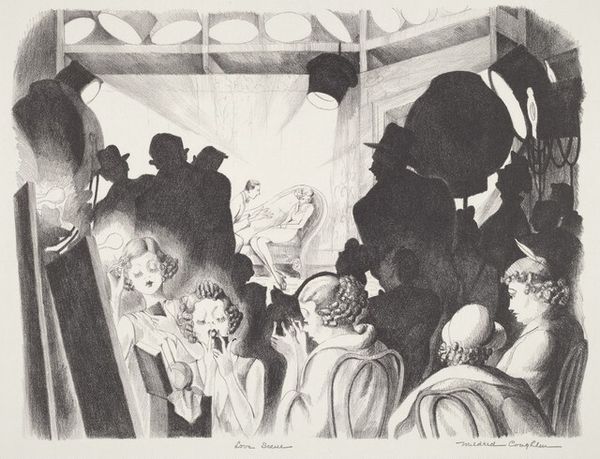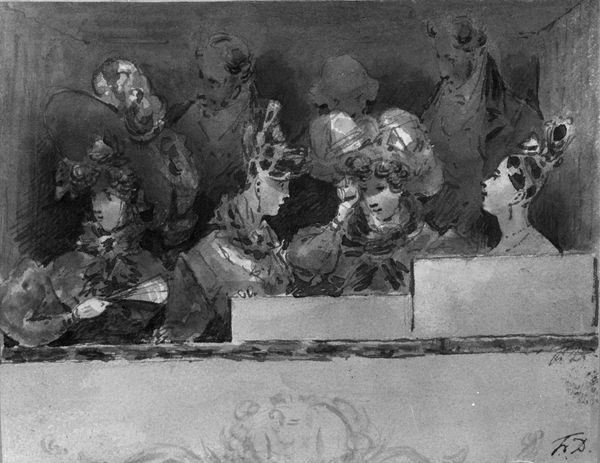
#
street festival
#
cosplay
#
building site documentary shot
#
festival photography
#
culture event photography
#
soldier
#
cultural celebration
#
asian style outfit
#
men
#
multicultural outfit
#
public art photography
#
clothe exhibition
Copyright: Public domain
Curator: Boris Kustodiev painted "Church Parade of the Finlandsky Guard Regiment, December 12, 1905" in 1906, capturing a moment of imperial ceremony. Editor: The overwhelming gray and brown palette immediately communicates formality. It feels incredibly stiff and regimented. Look at those converging lines. Curator: Regimented, yes, and highly symbolic. Parades such as this were a theatrical performance of power. They solidified the Tsarist regime’s image. Each uniform, each ornament, signifies status and loyalty. Note, for example, the elaborate headdress on the clergyman in the foreground. It is not merely decorative. It represents spiritual authority deeply intertwined with temporal rule. Editor: The artist creates depth by varying his strokes. See how, at the periphery, we get looser brushstrokes—suggestive rather than descriptive—a contrast to the focused details of those figures front and center? It almost implies the crowd blurs into an indistinguishable mass. Curator: Exactly. Kustodiev is portraying more than a parade. It reflects a societal structure, from the individual officers to the faceless masses—a hierarchy of the privileged versus those less visible. It subtly speaks to the social tensions that were bubbling just before the revolution. Editor: The perspective, drawing the eye deep into the hall, emphasizes that vastness of space, which, in turn, dwarfs the human figures. And the subdued color palette? What is he conveying through it, I wonder? The gold accessories provide slight contrasts. Curator: The painting employs color sparingly, reflecting a somber tone—the year 1905 being fraught with political unrest after the Bloody Sunday massacre. The church was integral to Russian national identity, a powerful source of legitimacy for the Romanovs. Editor: Looking closer, I am really impressed with how Kustodiev managed to construct spatial logic and hierarchy via color temperature and the manipulation of detail, without getting overly illustrative. Curator: Well, perhaps the power of the symbols is as profound here. Visual elements such as a religious figures in this historical period would bring up questions about faith, power and identity. Editor: Yes. I suppose that without historical insight, formal aspects are interesting as art construction, but with symbolic consideration, Kustodiev delivers commentary on the anxieties of a regime in decline.
Comments
No comments
Be the first to comment and join the conversation on the ultimate creative platform.
